In this week’s Jewelry Navigator Podcast episode, I shared shopping tips for diamonds, while debunking four common myths and misconceptions about diamonds.
If you missed it, you can find the full audio podcast here, on Podbean, as well as on iTunes in the iTunes store.
As promised, here are the photos and show notes for this week’s podcast.
April Showers Us With Diamonds

April showers us in diamonds this month as its birthstone and for anyone who loves the sparkle and intrigue of a diamond.
For April, here on the blog, and on the podcast, I’ll be sharing helpful tips about diamonds, along with unique jewelry set with diamonds.
In the most recent podcast episode, Diamond Shopping Tips & Debunking Four Common Myths and Misconceptions we shed light on common misunderstandings about diamonds.
In the podcast, we went through four of the most common misconceptions when it comes to understanding diamonds with a True / False quiz.
I also shared a very special feature designer of the week who uses diamonds that glow to really make their jewelry sparkle!

Shopping for diamonds can be somewhat intimidating and mysterious, so, this month, my aim is to make it easier for any of you who are in the market for new diamond.
Here are the four misconceptions I cover in the podcast as a True/False quiz format.
- DIAMONDS WON’T BREAK
- DARK INCLUSIONS INSIDE DIAMONDS ARE CHUNKS OF COAL
- DIAMONDS NEED TO BE SET UP HIGHT FOR THE LIGHT TO GET THROUGH THEM
- OLDER DIAMONDS ARE BETTER THAN NEWER ONES
Number 1: DIAMONDS WON’T BREAK:
The good news about diamonds, is that they won’t scratch.
Being the hardest gem mineral used for jewelry purposes, diamonds are like gemstone super heroes when it comes to resisting scratches.
Most gemstones are minerals, and from the time they were first discovered, we’ve been comparing and cataloging them to help us understand the earth’s processes and geology.
In 1812, a German Mineralogist, Friederick Mohs, developed a scale to compare the hardness of minerals for a basic means to identify them.
He chose ten different minerals commonly found in rocks, and separated them based on how easily their surface scratched by harder minerals or crystals.
Talc is the softest and lowest mineral on the scale at 1, and diamond, the hardest at 10.
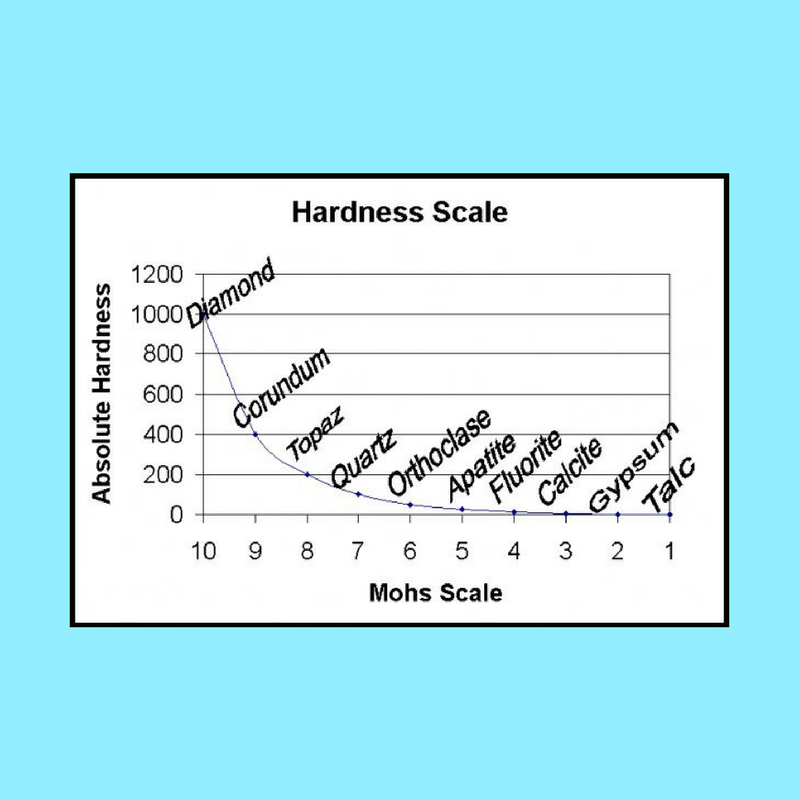 There are other more accurate methods to measuring a stone’s hardness, but in the jewelry trade, the Moh’s Hardness Scale is the standard reference we use for a wearability guide for set gems and jewelry.
There are other more accurate methods to measuring a stone’s hardness, but in the jewelry trade, the Moh’s Hardness Scale is the standard reference we use for a wearability guide for set gems and jewelry.
In general, Stones with a hardness of 7 and over are better for frequent wear. The higher the hardness, the better they hold up to scratching.
The scale isn’t linear, which means the difference in hardness isn’t just one step above each subsequent mineral.
For instance, Corundum, which is the mineral name for ruby and sapphire, is 9 on the hardness scale.
But, even though it’s next to diamond on the scale, diamond is actually 4 times harder than rubies and sapphires.
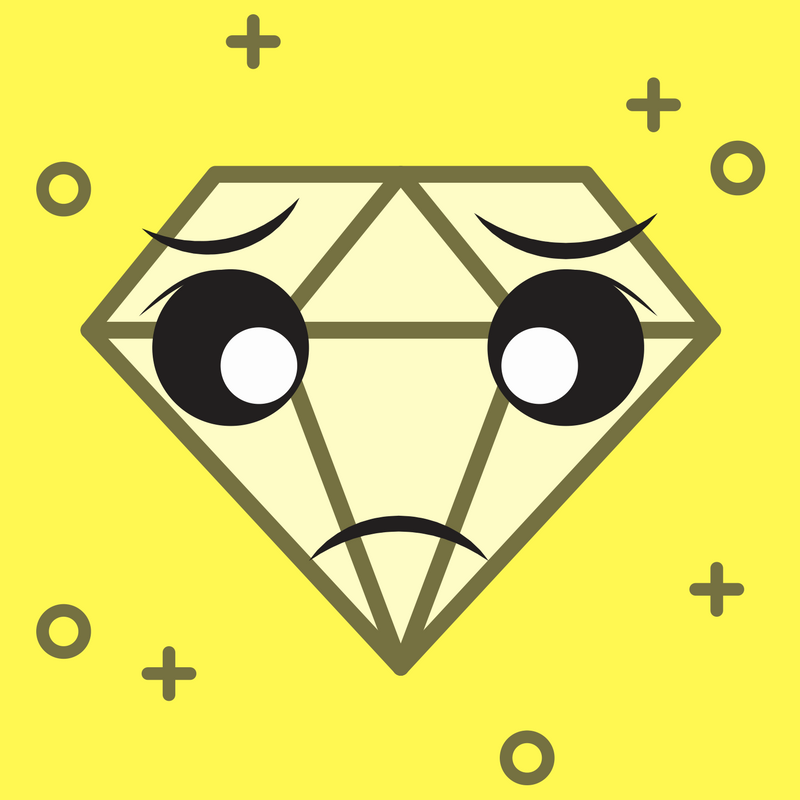
The bad news is that diamonds have a weak spot in their cleavage, or crystal structure direction that’s weaker.
Diamond’s crystal structure forms with perfect cleavage, which means the molecular bonds between the crystal structure layers are weaker in a particular direction, making it easier to fracture if hit between the cleavage planes.
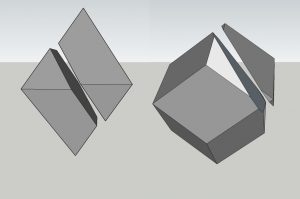
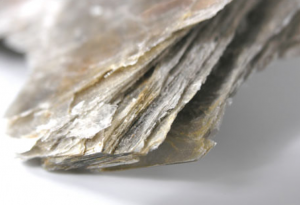
Toughness is how well a gem or mineral stands up to a hard hit.
For gems and minerals with cleavage, their toughness is lower because it’s easy for them to break along their cleavage planes, or directions.
(think of it as a plank of wood, and how it will split easily along the grain of wood)
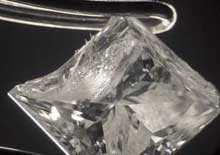
Durability is the overall rating to how well gemstones stand up to frequent and long term wear, and although diamond wins with a ten for hardness to resist scratching, its toughness is lower.
SO, THE ANSWER TO THE FIRST QUESTION, DIAMONDS WON’T BREAK IS FALSE.
Even though diamonds are hard, their toughness is lower, and if hit hard enough along the cleavage planes, the diamond will chip or fracture.
Number 2: DARK INCLUSIONS INSIDE DIAMONDS ARE CHUNKS OF COAL
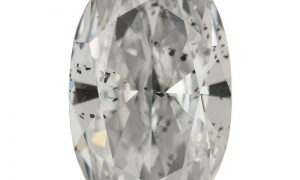
Simply because diamond’s chemical make up is pure carbon doesn’t mean that the inclusions you can see are coal.
Most of the inclusions you see inside of diamonds or actual diamond or other gem crystals within the host crystal.
Garnet and peridot are common crystals known to form inside diamonds during the formation of the host diamond crystal.
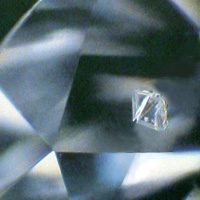
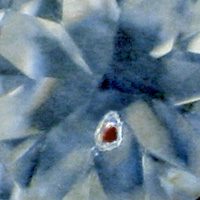
So what you see as a dark inclusion is a dark included crystal, or a cluster of small dark crystals.
What about coal changing into diamonds?
According to geology.com, geologists have dated diamonds to be older than the plant materials from which coal was formed, and the depth at which diamonds and coal are formed are significantly different.
Here is the description from Hobart M. King, Ph. D., RPG of Geology.com.
(You can read the entire article with resources here)
“The formation of natural diamonds requires very high temperatures and pressures. These conditions occur in limited zones of Earth’s mantle about 90 miles (150 kilometers) below the surface where temperatures are at least 2000 degrees Fahrenheit (1050 degrees Celsius) [1]. This critical temperature-pressure environment for diamond formation and stability is not present globally. Instead it is thought to be present primarily in the mantle beneath the stable interiors of continental plates [2].”
“Coal is a sedimentary rock, formed from plant debris deposited at Earth’s surface. It is rarely buried to depths greater than two miles (3.2 kilometers). It is very unlikely that coal has been moved from the crust down to a depth well below the base of a continental plate. The carbon source for these mantle diamonds is most likely carbon trapped in Earth’s interior at the time of the planet’s formation.” – Hobart M. King, Ph. D., RPG, Geology.com, reference [2] American Museum of Natural History (1998). The Nature of Diamonds – Diamonds are Found on Continental Cores. American Museum of Natural History.
So the answer to our second true false question is false:
DARK INCLUSIONS INSIDE DIAMONDS ARE NOT CHUNKS OF COAL
The GOOD thing about inclusions, is that they serve as identifying marks, like a birthmark, so gemologists and jewelers can tell the difference between a diamond, and any other clear gemstone, especially stones meant to simulate a diamond, like cubic zirconia and Moissanite.
Many inclusions are unique microscopic works of nature like the ones below, one even looks like a unicorn trapped inside of the diamond!
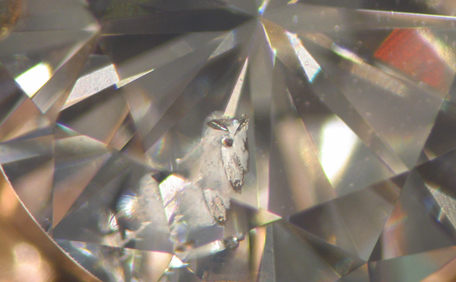
Number 3: DIAMONDS NEED TO BE SET UP HIGH FOR THE LIGHT TO GET THROUGH THEM
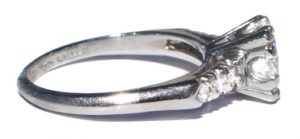
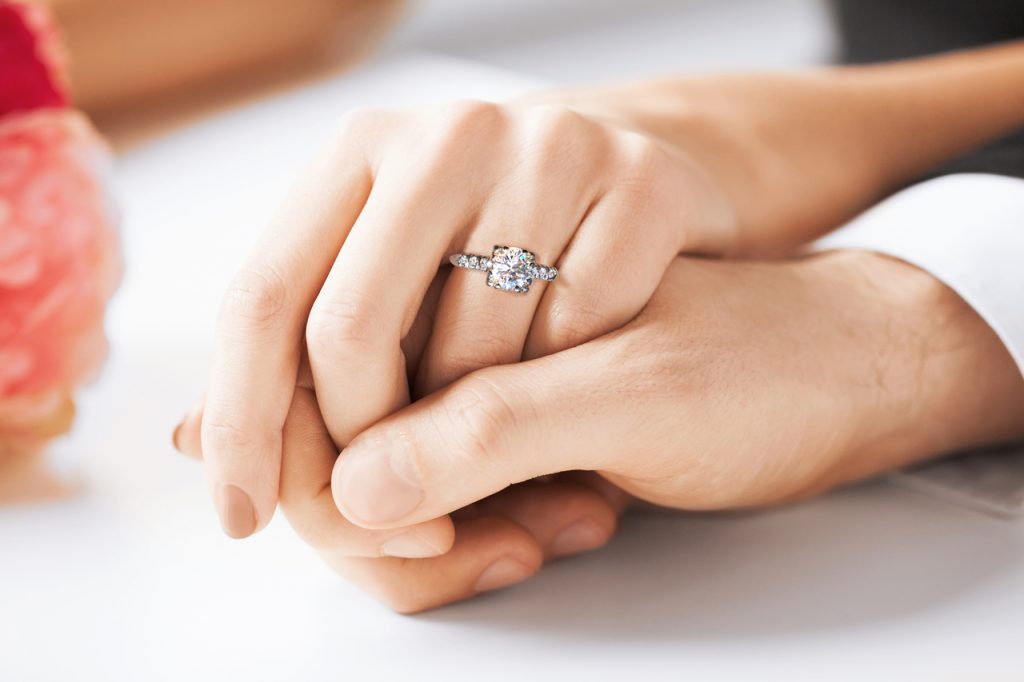
It’s hard to imagine that a diamond can still look good unless it’s set up high for light to get under it to sparkle, but that’s not the case for a couple of reasons.
One reason is their optical properties and how light performs in them, and the second influence is how well they’re cut.
Jewelers and diamond sources understand that the higher the cut grade of a stone, the better it looks.
Cut is one of the 4C’s for grading a diamond. The highest cut grade in the GIA grading system is Excellent.
The closer a diamond is to an excellent cut grade, the better the light return is, and that means more sparkle!
Refractive Index Measures Sparkle Power
Refractive index is an optical measurement that’s specific to transparent gems, and is a major identifying characteristic used in gemology.
Each gemstone has a signature refractive index determined by its crystal structure, and how quickly light travels through it.
Diamond’s refractive index is high compared to most other gemstones, which makes is more sparkly.
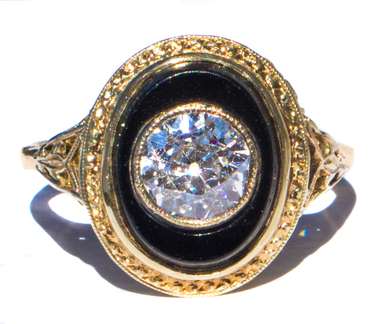
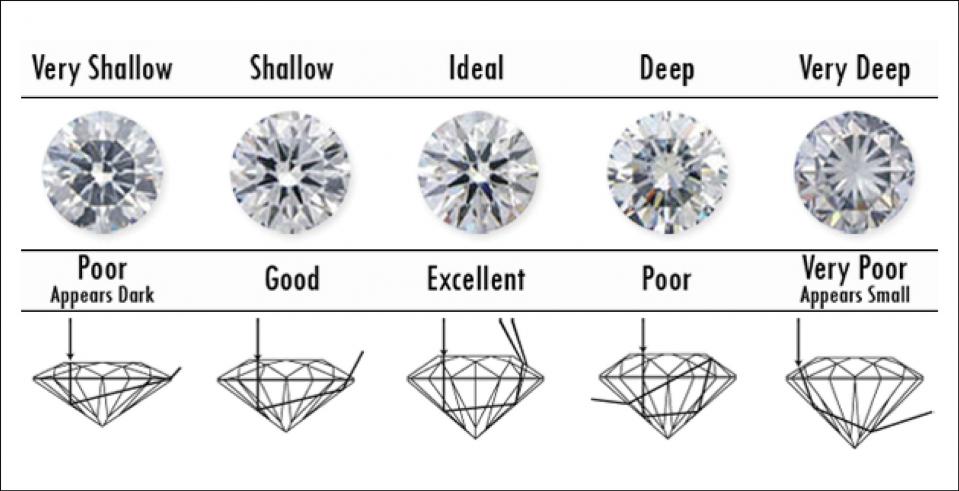
Diamond Cut and Faceting
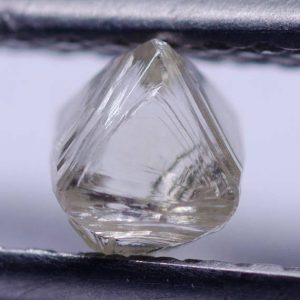
It can get really scientific, so briefly, diamonds were originally faceted, or cut based on their natural crystal form of a double ended pyramid, or octahedron.
From there, the first diamond cutters faceted diamonds with the standard 58 facets of today’s round brilliant diamonds, but in a squarish, primitive form called the old mine cut.
Old Mine Cut diamonds originated with diamond discoveries in Brazil and India, where the rudiments of diamond faceting began.
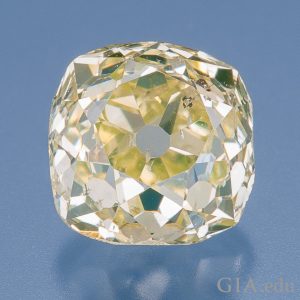
When diamonds were discovered in other sources besides Brazil and India, the cut style became referred to the “old mine” stones.
Since then, the science of faceting has evolved into more mathematically precise methods, where the cutting of a diamond strives to result in the the most brilliance, fire and sparkle.
When light enters the table and crown facets of a diamond (which are on the top of the stone), it refracts and reflects through and around the bottom, or pavilion of the diamond, returning the light back through the top of the stone in the form of brilliance and fire.
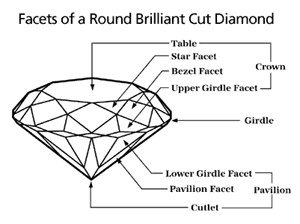
Brilliance is the amount of contrast between light and dark reflections inside the stone, and fire is the dispersion of light into spectral colors.
Sparkle, also known as scintillation, is the reflection of light from the crown or top facets of a stone as it moves.
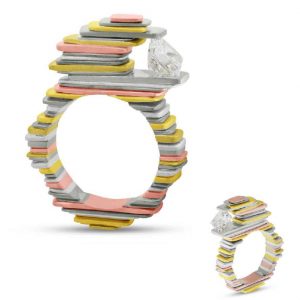
Because diamonds have a high refractive index, and as long as they’re well cut, light will still be able to enter the diamond and return no matter how it’s set.
Before we get to the final True – False question, did you know diamonds glow?! Well, some diamonds exhibit fluorescence when exposed to ultraviolet light.

Checking if a diamond fluoresces is actually one of the tests to use to positively identify a diamond.
It’s been debated whether fluorescence affects the appearance and value of a diamond.
While some diamonds that fluoresce will look hazy, most don’t show any indication of the phenomena.
If you have a black light, or next time you’re at a venue with ultraviolet lighting, look to see if any of your diamonds fluoresce – it’s really cool!
Most jewelers avoid using diamonds that fluoresce, but there’s one who uses them to mimic the night sky!
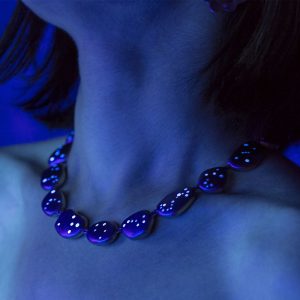
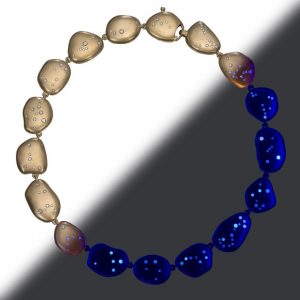
This week’s featured jeweler is Patrick Mohs Jewelry in Wayzata (pronounced Why-zetta), Minnesota.
I happened to meet Patrick Nelson and Mary Kay Mohs, the husband – wife design team at Patrick Mohs Jewelry, at the last Metal and Smith Winter Edit in NYC.
They’re a delight, and I was so excited to meet them!
If you’re anywhere near Wayzata, MN, stop by their shop – they create beautiful jewelry with unique designs and stone combinations.
Their line of Skipping Stone jewelry is set with diamonds that fluoresce in the formation of the constellation of your choice!
The complete Night Sky necklace has since sold, but each 18 kt gold stone is set with diamonds in the form of a constellation.
Individual Skpping Stone pendants are available, and word has it that more jewelry is being designed for the Stepping Stone collection!
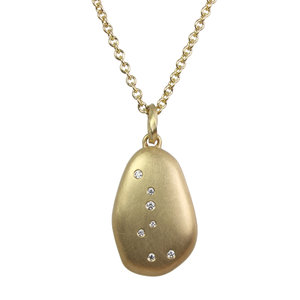
OLDER DIAMONDS ARE BETTER THAN MODERN DIAMONDS
Are older diamonds better than modern cut diamonds?
Theortically, modern stones are better because of the reasons I just explained with the cut of a diamond, but as is with any gemstone and jewelry, it’s all a matter of preference.
Some people love that an older diamond has history, but if you want the most sparkle for your buck, stick with the more modern cut diamonds.
There are so many more things we could address when it comes to diamonds.
If you’d like to hear more, or have specific questions, please reach out in the comments, on Facebook or Instagram.
I’m on both platforms @jewelrynavigator, and on Twitter @jewelrynavig8r.
Resources:
Diamond Origins
https://phys.org/news/2016-12-biggest-diamonds-deep-mantle-metallic.html
https://geology.com/articles/diamonds-from-coal/
Unicorn Photo courtesy Tim Schuler, G.G.
Cut old mine vs European and transitional cut
http://4cs.gia.edu/en-us/blog/old-mine-cut-diamond/
Listen…

Sometimes, we don’t have time to read and browse online, but podcasts offer an easy way to get your info on the go.
If you haven’t subscribed to The Jewelry Navigator podcast yet, you can find it, subscribe, and listen on Apple’s iTunes store (don’t worry – it’s free!), and on Podbean as well.
There are three other episodes packed with gem and jewelry tips, along with the stories of featured designers you won’t find in most stores.
If you like listneing, please leave a review on iTunes, and I’ll send you a special message that sparkles with appreciation!